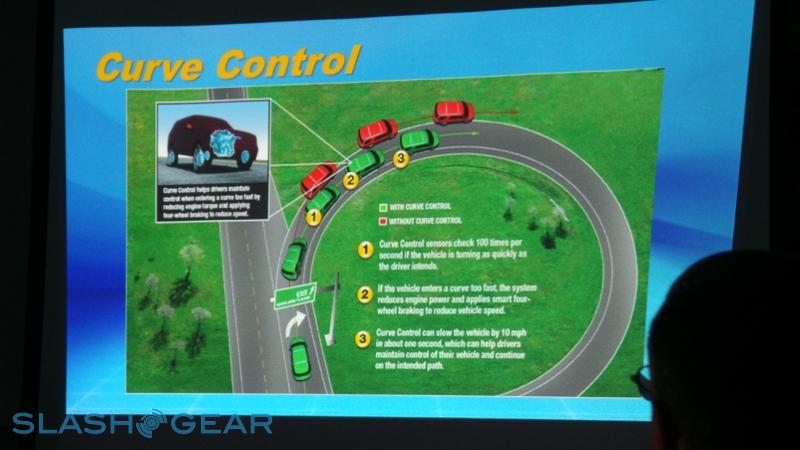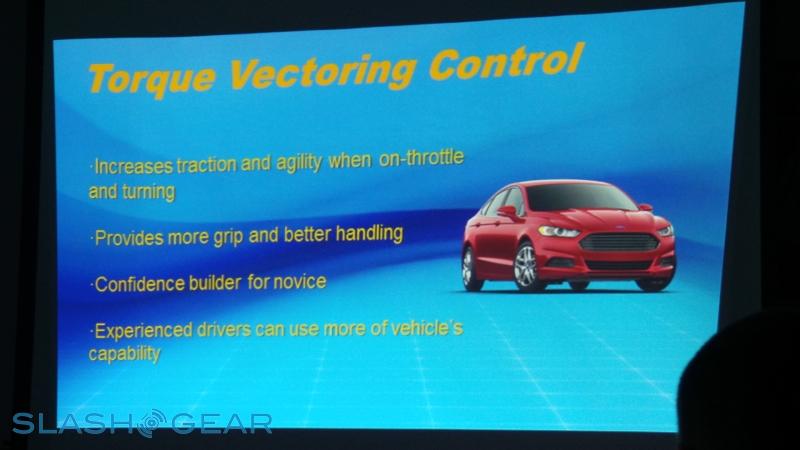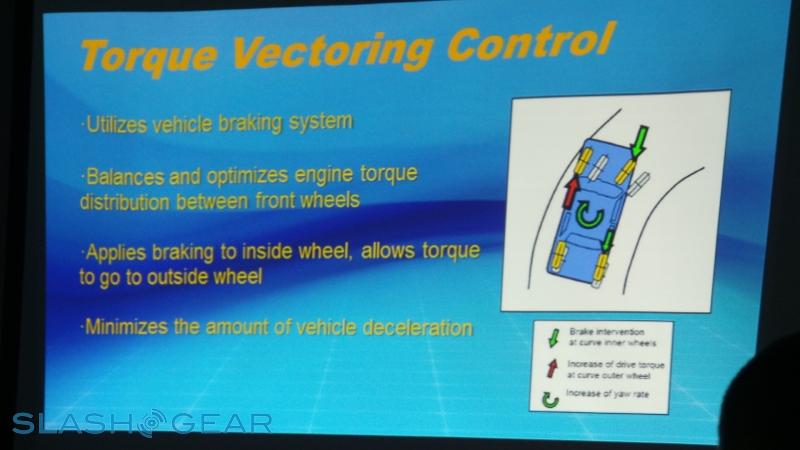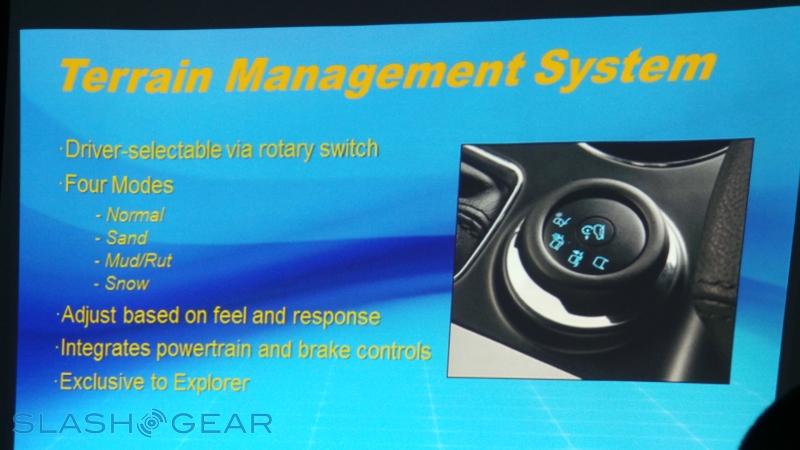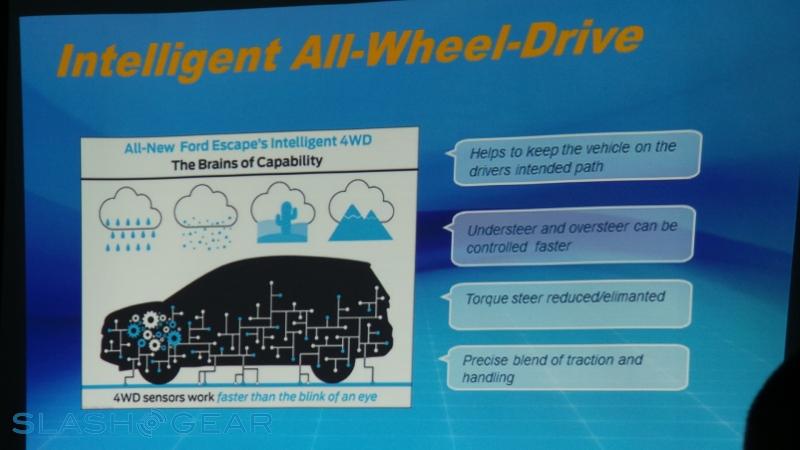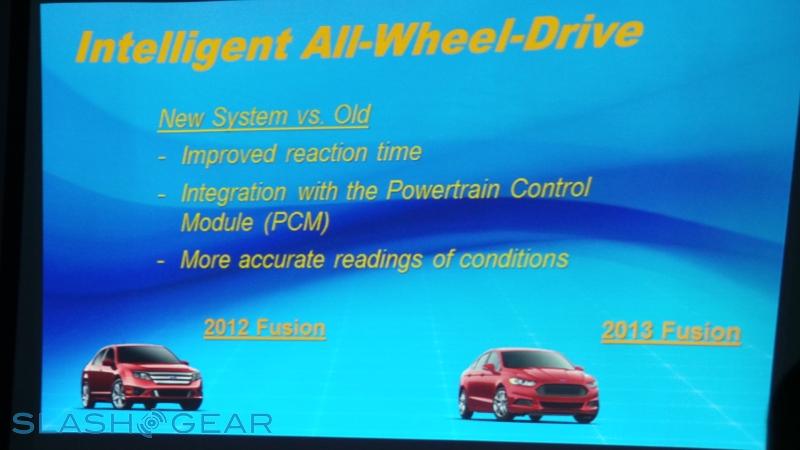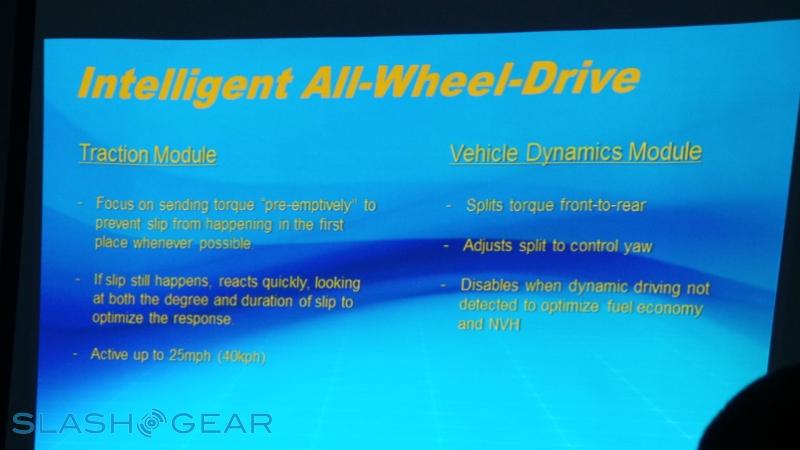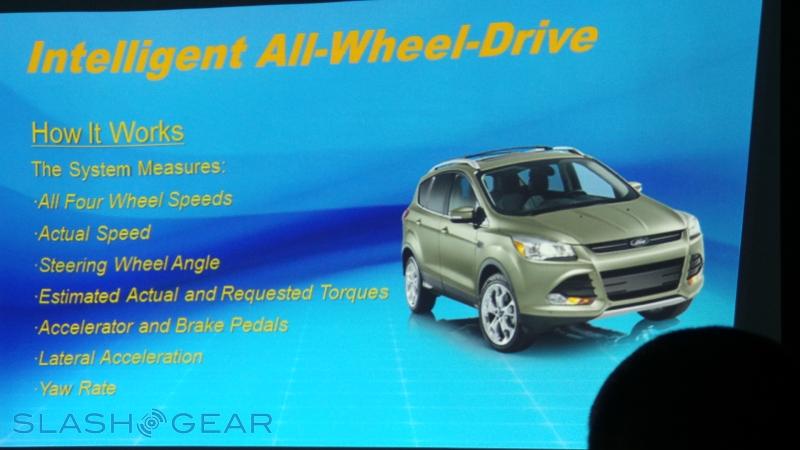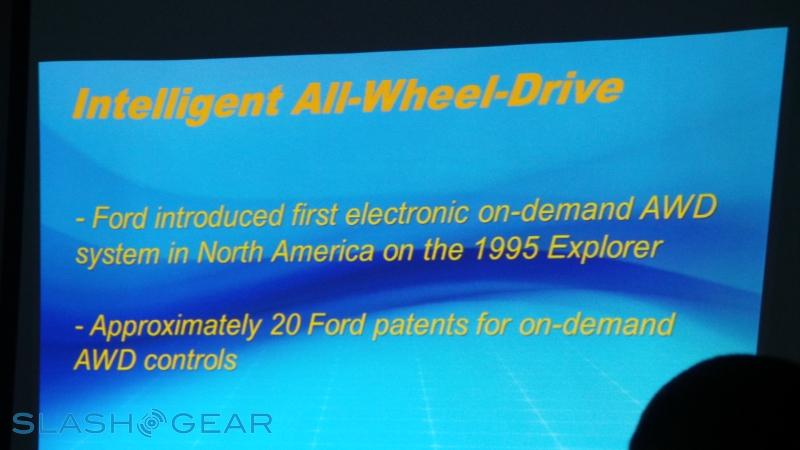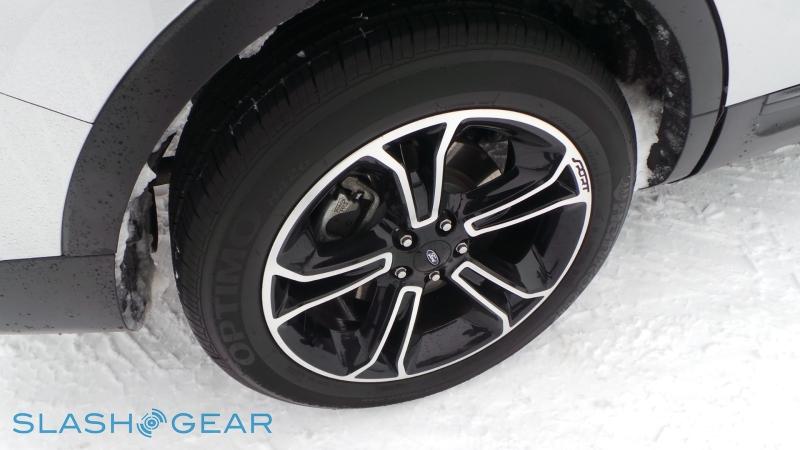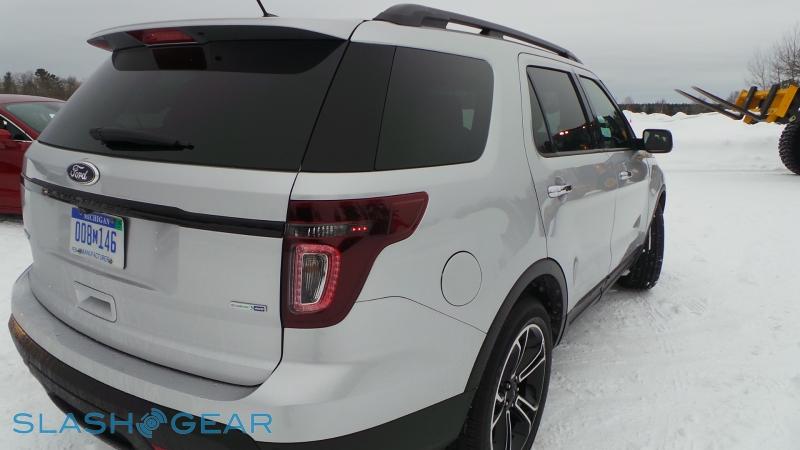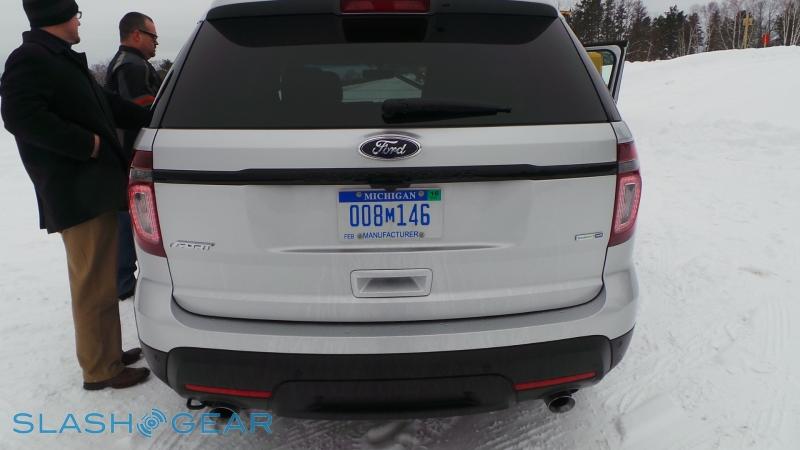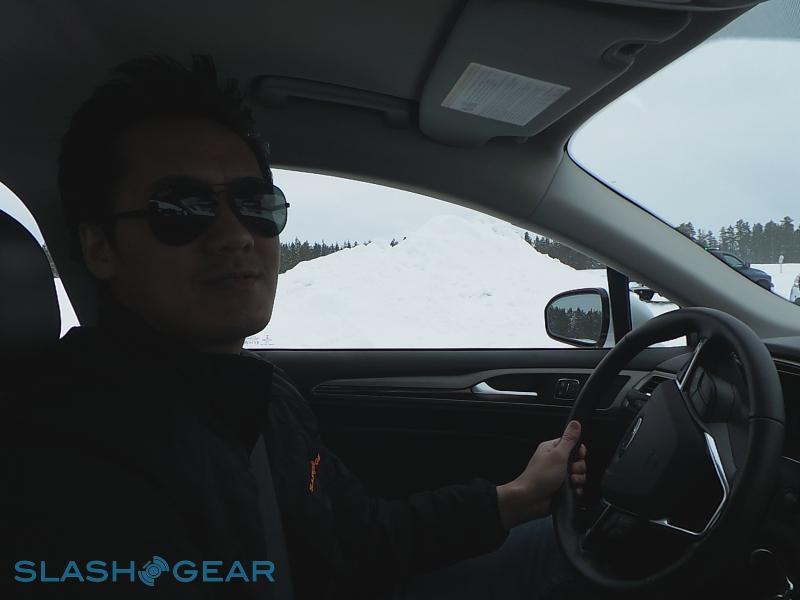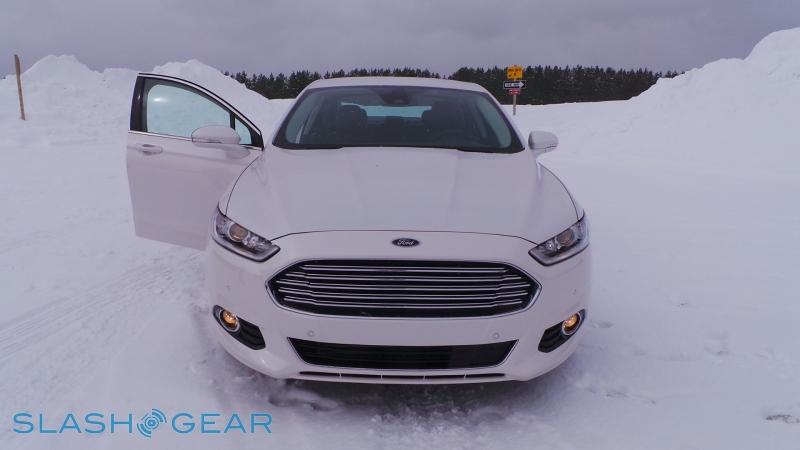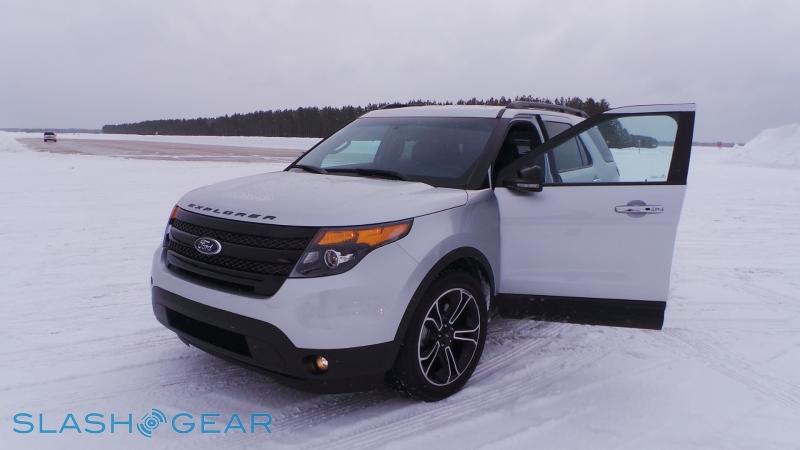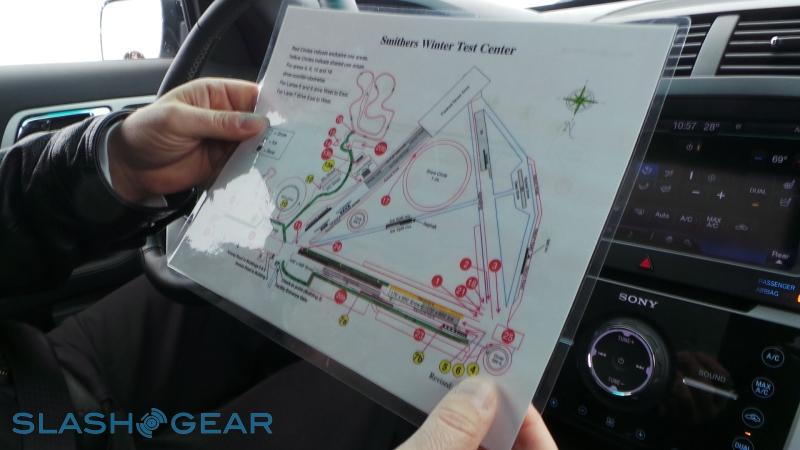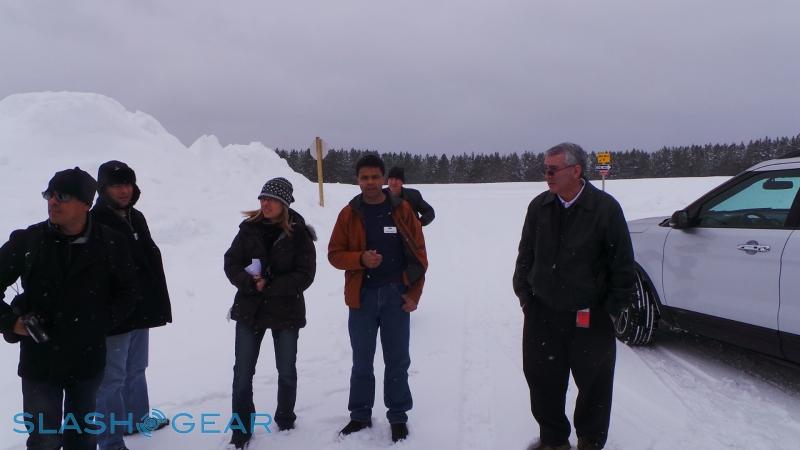Ford Winter Technology Drive In Michigan's Upper Peninsula
Watch the commercials and you'd assume all cars are only designed for long, sweeping roads on scenic mountain routes and by sun-blessed beaches. As plenty of drivers have discovered this winter, however, snow, ice, and similarly treacherous conditions can make getting behind the wheel far more intimidating. SlashGear joined Ford in the cold of Michigan's Upper Peninsula, to see what good behavior we could coax from the Ford Escape, Fusion, and Explorer Sport when the conditions get bad.
The core advice for winter driving hasn't changed much over the years, but more than a few people ignore suggestions to switch regular tires to their deep tread counterparts, and wouldn't have a clue what to do with snow chains. Thankfully cars themselves have got smarter along the way, with a growing number of electronic driving aids that can work around the limitations of both the road and the driver.
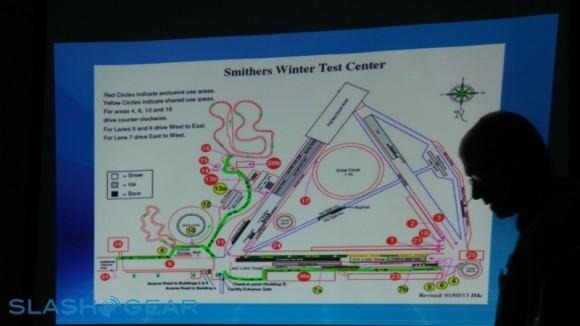
Ford's chosen test ground would be an icy nightmare for most drivers, a range of different conditions including loose and impacted snow, treacherous ice, and the sort of gritty combinations that make many backroads so dangerous when it gets cold. As for the technology, Ford starts with all-wheel-drive (AWD) on many cars, but its front-driven models also get a boost courtesy of electronic magic like Curve Control and Torque Vectoring Control.
Introduced first on the 2012 Focus, Torque Vectoring Control monitors grip levels on each wheel and can dynamically shift the torque – the rotational force produced by the engine – to whichever side of the car has the best grip. Ford claims it can "virtually eliminate" understeer in regular driving, while in more wintery conditions it can counteract patches of ice or snow which rob the car of grip, without significantly reducing the speed of the vehicle.
There's dangerous roads, and there's mis-reading the road conditions and tackling them incorrectly. That's where Curve Control steps in, a cornering technology Ford debuted back in 2010, and which it intends to have on the majority of its range by 2015. Enter a corner too quickly – Ford's sensors track that 100 times per second – and Curve Control can shed 10mph from your speed in the space of a single second, by adjusting the four brakes and trimming engine torque.
Curve Control works in the dry, but it's far more impressive when you're trying to navigate a car round a suddenly icy corner. Ford's system works by comparing how much the driver is turning the wheel with how much the car is actually turning, kicking in when the understeer becomes too great.
These are more than just blinking lights in the instrument binnacle, too: you can feel Curve Control and Torque Vectoring Control doing their work. Pushing the Escape SUV too hard through the icy corners of Ford's test course, for instance, and the power shifting between the wheels to guide it back onto the line was noticeable through the seat and the wheel. You can feel the car correcting itself; when we turned off the traction control altogether, the difference was clear, with corners instantly turning into slides at speeds where, with the electronic brains in place, we'd previously sailed serenely round.
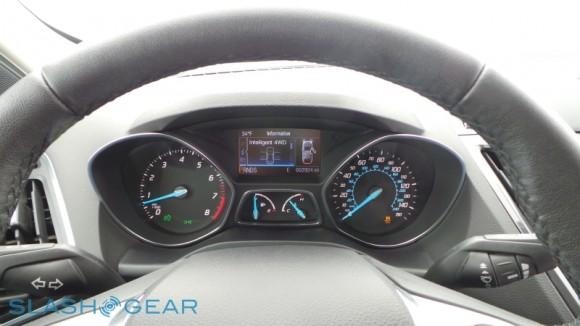
The technology works on Ford's FWD cars, but it's even more impressive in the AWD models. In a FWD Fusion, for instance, the car will automatically prioritize two-wheel drive in regular conditions, for the best fuel economy, but instantly switch in the all-wheel drive when grip starts to disappear. Corners on the ice track which we ended up going sideways on with traction control turned off, we were able to comfortably take at 40-50mph with Curve Control and Torque Vectoring Control switched on.
Step into the Explorer, meanwhile, and there's even more control possible over the safety and stability systems. The seven-seater SUV exclusively gets Ford's Terrain Management System, a knob in the center console which allows the driver to switch between four road conditions: normal, sand, mud/rut, and snow. The mood of the car changes noticeably when you do, the Explorer feeling calmer and more considered in the snow mode as the electronics ramp up their role. It's not the mode for eager drivers, certainly, with the safety systems particularly intrusive, but it makes a huge difference in how confidently you can take on treacherous roads.
That's not to say the Ford technology is anathema to fun. Just as it the various traction systems show their worth in getting you safely round in snow and ice at real-world speeds, at a more eager pace – and on the safety of a closed course rather than public roads, of course – you can start to have some real fun, relying on enough grip to get around corners while also letting the tail of the car swing out. As Ford told us, the electronics mean "you can take an unskilled driver, and turn them into a skilled driver." When you're on ice we struggled to walk on, it feels more like magic.
Ford currently offers eight models with AWD, while eleven offer Torque Vectoring Control. So far, the C-MAX Energi and Hybrid variants, the Escape, the Explorer, the Flex, and the Taurus offer Curve Control.

